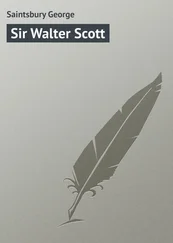shown, when there are, both living and accessible, parties whose evidence might be of great importance, and who — carefully sought out and canvassed when they have a word to say or write which will tell in favour of the pamphleteers — are kept most scrupulously at a distance when their testimony might prove unfavourable.
It still remains, untouched and unquestioned by any of the lengthy and grandiloquent statements of this bulky pamphlet, a clear and indisputable fact that Sir Walter Scott was the architect of the Ballantyne fortunes; that he raised Messrs. James and John from obscurity, brought them into notice and established for them good connexions; and finally, that Mr. James did at last and after all his alleged misfortunes leave to his son, for a sufficient support and maintenance, that creditable business to which he has succeeded, and which was founded and altogether made by Sir Walter Scott. He left to his children beside what this very lofty and aspiring young gentleman, the son of Mr. James aforesaid, calls ‘an inheritance of four or five thousand pounds,’ and which we — taking into consideration that Mr. James had always lived pretty gaily and close upon his means — would humbly suggest was rather more than they might have expected, and quite enough to have made all his sons, heirs, trustees, and descendants, contented and grateful.
We should not have bestowed so many words upon this ‘reply’ but for certain documents which appear in the appendix; and we have sufficient faith in the manly feeling of the deceased Mr. James Ballantyne — who, notwithstanding his solemn conceit and very laughable exaggeration of his intellectual and social position, seems to have been on the whole an estimable person — we place credit enough in his love and reverence for Sir Walter Scott, in his gratitude and esteem for that true benefactor and most condescending friend, to believe he would rather have submitted to be burnt alive than have his name disgraced, and every feeling of honourable confidence violated, by their publication.
In this appendix there are set forth — wholly unconnected with the text of the reply — not referred to — not called for in any way — the following, among other letters from Sir Walter Scott to Mr. James Ballantyne; printed and published now, to show Mr. James Ballantyne the printer as the great patron of Sir Walter Scott the author, the dispenser to him and his family of bread and cheese and clothing while he worked at his death!
Dear Sir, — Please to settle the enclosed accompt, Falkner and Co., for £94 odds, and place the same to my debit in accompt. — Your obedient Servant, Walter Scott.
Edinburgh, 29th June.
Mr. James Ballantyne, Printer, Edinburgh, Canongate.
Dear James, — I will be obliged to you for twentyfour pounds sterling, being for a fortnight’s support for my family. — Yours truly, Walter Scott.
Castle Street, 23rd January. Mr. James Ballantyne.
October 15, 1820.
Sir, — You will find beneath an order on Mr. James Ballantyne to settle your account by payment or acceptance, which will be the same as if I did so myself. I could wish to be furnished with these bills before they exceed £50, for your convenience as well as mine. — I am, Sir, Your obedient Servant, Walter Scott.
Abbotsford, 13th October.
Mr. Blackwood, etc.
Sir, — Be pleased to settle with Messrs. Blackwood, mercers, etc., Edinburgh, an accompt due by my family to them, amounting in sum to £218 sterling, and this by payment, or a bill at short date, as most convenient, and place the amount to my debit in accompting. — I am, Sir, Your obedient Servant, Walter Scott.
Abbotsford, 13th October 1820.
If Mr. Thompson will take the trouble to call on Mr. James Ballantyne, printer, Paul’s Work, Canongate, and show Mr. Ballantyne this note, he will receive payment of his accompt of thirtythree pounds odds, for hay and corn due by Sir Walter Scott. Walter Scott.
Castle Street, 8th July.
July 13, 1825.
Lady Scott, with best compliments to Mr. Ballantyne, takes the liberty of enclosing him two of Miss Scott’s bills, which have been omitted being added with her own, and might occasion some difficulty in the settling of them, as Misses Jollie and Brown are giving up business. Lady Scott has many apologies to make for giving all this trouble, and having also to request that, when he is so obliging to settle her account with Mr. Pringle the butcher, that he would also settle her last account with him, that she may be quite clear with him. Lady Scott thinks that her second account will amount nearly to £40.
Castle Street, Saturday morning.
Now, we ask all those who have been cheered and delighted by the labours of this great man, who have hearts to feel or heads to understand his works, and in whose mouths the creations of his brain are familiar as household words — we ask all those who, in the ordinary transactions of common life, have respect for delicacy and honour, — What sympathy are they prepared to show to the trustees and son of the late Mr. James Ballantyne, who, unable sufficiently to revenge their quarrel with Mr. Lockhart upon Mr. Lockhart himself, presume to turn upon the subjects of his biography, and seek a retaliation in means so pitiful and disgusting as these?
Table of Contents
Table of Contents
A TALE OF FLODDEN FIELD
Table of Contents
Introduction
Introduction to Canto First
Canto First
Introduction to Canto Second
Canto Second
Introduction to Canto Third
Canto Third
Introduction to Canto Fourth
Canto Fourth
Introduction to Canto Fifth
Canto Fifth
Introduction to Canto Sixth
Canto Sixth
Table of Contents
The “Lay of the Last Minstrel,” Scott’s first romantic tale, was published in January, 1805, and won for its author his first great success. The writing of “Marmion” was begun in November, 1806. Constable offered as publisher to pay at once a thousand guineas for the copyright, when he heard that the new poem was begun, though he had not yet seen a line of it. Miller and Murray joined, each taking a fourth part of the venture, and John Murray said, “We both view it as honourable, profitable, and glorious to be concerned in the publication of a new poem by Walter Scott.” Scott, thirtyfive years old, had the impulse upon his mind of a preceding great success, took more than usual pains, and thoroughly enjoyed the writing. On pleasant knolls, under trees, and by the banks of Yarrow, many lines were written; and trotting quietly over the hills in later life he said to Lockhart, his son-in-law, “Oh, man, I had many a grand gallop among these bracs when I was thinking of ‘Marmion.’“ The description of the battle of Flodden was shaped in the autumn of 1807, when Scott was out practising with the Light Horse Volunteers, which had been formed in prospect of an invasion from France, and of which Scott was quartermaster and secretary. Scott at those gatherings was full of companionable mirth, and in intervals between drill he would sometimes ride his charger at full speed up and down on the sands of Portobello within spray of the wave, while his mind was at work on such lines as –
“They close, in clouds of smoke and dust,
With sword-sway and with lance’s thrust;
And such a yell was there,
Of sudden and portentous birth,
As if men fought in upper earth,
And fiends in upper air.”
“Marmion” was published early in the year 1808; its first edition of two thousand, in the form, then usual, of a quarto volume, priced at a guinea and a half, was sold in a month. Then came the editions in octavo, of which there were twelve, between 1808 and 1825.
Читать дальше







